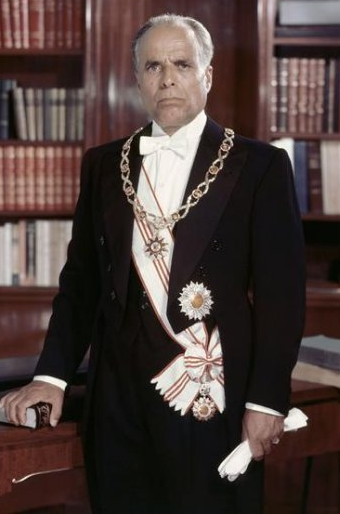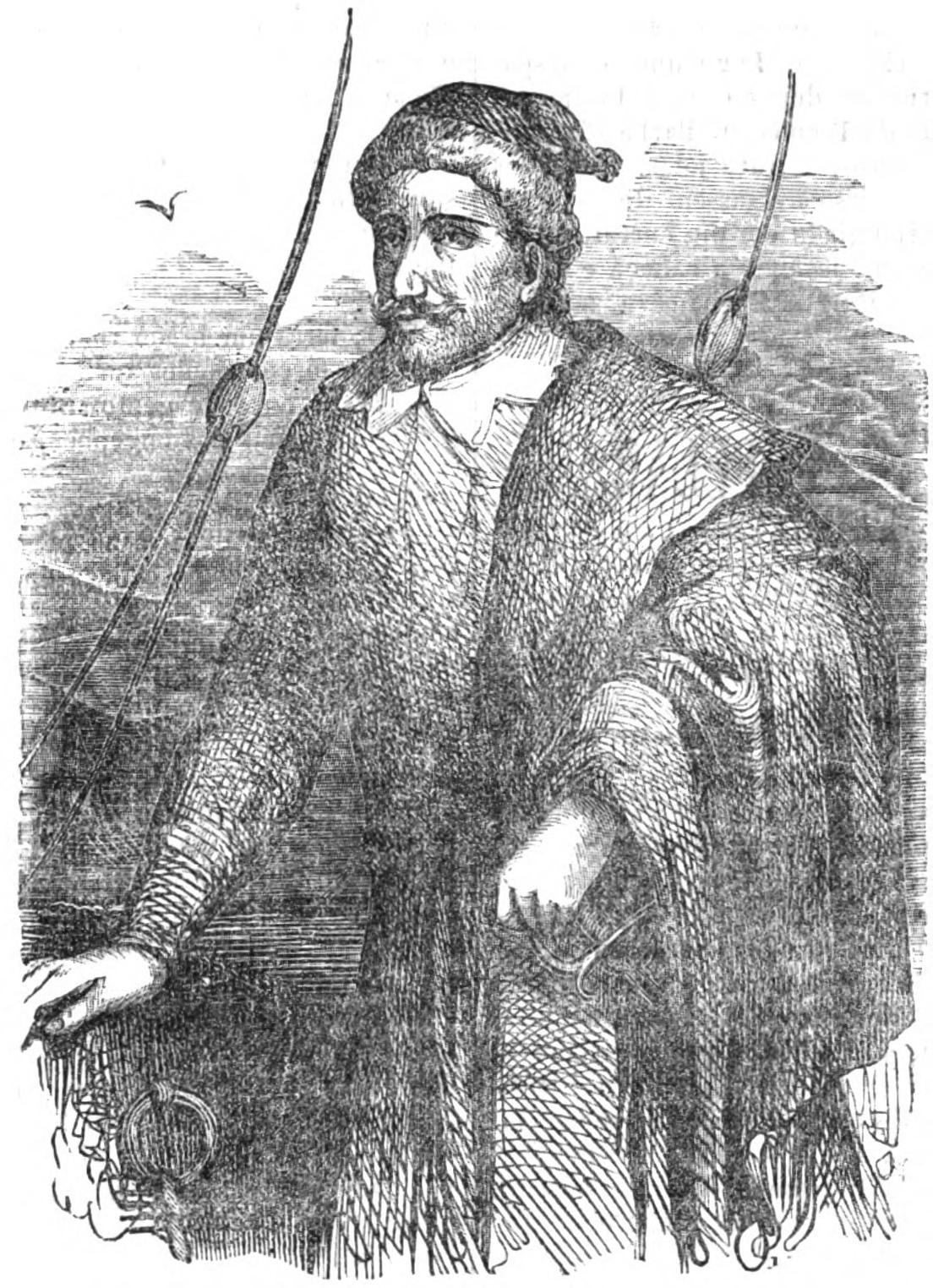|
Ottoman Tunisia
Ottoman Tunisia, refers to the episode of the Turkish presence in Ifriqiya during the course of three centuries from the 16th century until the 18th century, when Tunis was officially integrated into the Ottoman Empire as the Eyalet of Tunis. Eventually including all of the Maghrib except Morocco, the Ottoman Empire began with the takeover of Algiers in 1516 by the Ottoman Turkish corsair and beylerbey Oruç Reis. The first Ottoman conquest of Tunis took place in 1534 under the command of Barbarossa Hayreddin Pasha, the younger brother of Oruç Reis, who was the Kapudan Pasha of the Ottoman Fleet during the reign of Suleiman the Magnificent. However, it wasn't until the final Ottoman reconquest of Tunis from Spain in 1574 under Kapudan Pasha Uluç Ali Reis that the Turks permanently acquired the former Hafsid Tunisia, retaining it until the French occupation of Tunisia in 1881. Initially under Turkish rule from Algiers, soon the Ottoman Porte appointed directly for Tunis ... [...More Info...] [...Related Items...] OR: [Wikipedia] [Google] [Baidu] |
Tunisian Arabic
Tunisian Arabic, or simply Tunisian, is a set of dialects of Maghrebi Arabic spoken in Tunisia. It is known among its over 11 million speakers aeb, translit=Tounsi/Tounsiy, label=as, تونسي , "Tunisian" or "Everyday Language" to distinguish it from Modern Standard Arabic, the official language of Tunisia. Tunisian Arabic is mostly similar to eastern Algerian Arabic and western Libyan Arabic. As part of a dialect continuum, Tunisian merges into Algerian Arabic and Libyan Arabic at the borders of the country. Like other Maghrebi dialects, it has a vocabulary that is predominantly Semitic Arabic with a minimal Berber, Latin Tilmatine Mohand, ''Substrat et convergences: Le berbére et l'arabe nord-africain'' (1999), in ''Estudios de dialectologia norteafricana y andalusi 4'', pp 99–119 and possibly Neo-Punic substratum. Tunisian Arabic contains a few Berber loanwords which represent 8% to 9% of its vocabulary. However, Tunisian has also loanwords from French, Turkis ... [...More Info...] [...Related Items...] OR: [Wikipedia] [Google] [Baidu] |
Barbary Corsairs
The Barbary pirates, or Barbary corsairs or Ottoman corsairs, were Muslim pirates and privateers who operated from North Africa, based primarily in the ports of Salé, Rabat, Algiers, Tunis and Tripoli. This area was known in Europe as the Barbary Coast, in reference to the Berbers. Their predation extended throughout the Mediterranean, south along West Africa's Atlantic seaboard and into the North Atlantic as far north as Iceland, but they primarily operated in the western Mediterranean. In addition to seizing merchant ships, they engaged in '' Razzias'', raids on European coastal towns and villages, mainly in Italy, France, Spain and Portugal, but also in the British Isles, the Netherlands and Iceland. The main purpose of their attacks was to capture slaves for the Ottoman slave trade as well as the general Arab slavery market in North Africa and the Middle East. Slaves in Barbary could be of many ethnicities, and of many different religions, such as Christian, ... [...More Info...] [...Related Items...] OR: [Wikipedia] [Google] [Baidu] |
Tunis
''Tounsi'' french: Tunisois , population_note = , population_urban = , population_metro = 2658816 , population_density_km2 = , timezone1 = CET , utc_offset1 = +01:00 , timezone1_DST = , utc_offset1_DST = , postal_code_type = Postal code , postal_code = 1xxx, 2xxx , area_code_type = Calling code , area_code = 71 , iso_code = TN-11, TN-12, TN-13 and TN-14 , blank_name_sec2 = geoTLD , blank_info_sec2 = .tn , website = , footnotes = Tunis ( ar, تونس ') is the capital and largest city of Tunisia. The greater metropolitan area of Tunis, often referred to as " Grand Tunis", has about 2,700,000 inhabitants. , it is the third-largest city in the Maghre ... [...More Info...] [...Related Items...] OR: [Wikipedia] [Google] [Baidu] |
Ottoman Porte
The Sublime Porte, also known as the Ottoman Porte or High Porte ( ota, باب عالی, Bāb-ı Ālī or ''Babıali'', from ar, باب, bāb, gate and , , ), was a synecdoche for the central government of the Ottoman Empire. History The name has its origins in the old practice in which the ruler announced his official decisions and judgements at the gate of his palace. This was the practice in the Byzantine Empire and it was also adopted by Ottoman Turk sultans since Orhan I, and therefore the palace of the sultan, or the gate leading to it, became known as the "High Gate". This name referred first to a palace in Bursa, Turkey. After the Ottomans had conquered Constantinople, now Istanbul, the gate now known as the Imperial Gate ( tr, Bâb-ı Hümâyûn), leading to the outermost courtyard of the Topkapı Palace, first became known as the "High Gate", or the "Sublime Porte". When Sultan Suleiman the Magnificent sealed an alliance with King Francis I of France in 1536, the ... [...More Info...] [...Related Items...] OR: [Wikipedia] [Google] [Baidu] |
French Conquest Of Tunisia
The French conquest of Tunisia occurred in two phases in 1881: the first (28 April – 12 May) consisting of the invasion and securing of the country before the signing of a treaty of protection, and the second (10 June – 28 October) consisting of the suppression of a rebellion. The French protectorate of Tunisia that was established lasted until the independence of Tunisia on 20 March 1956. Context Early contacts Tunisia had been a province of the Ottoman Empire since the Conquest of Tunis (1574), although with great autonomy under the authority of a Bey. In 1770, Brigadier Rafélis de Broves bombarded the cities of Bizerte, Porto Farina and Monastir in retaliation for acts of piracy.. In the 19th century Tunisian commercial contacts with Europe were numerous, and there was a population of French, Italian and British expatriates in the country, that represented by Consulates. France had also made a major loan to Tunisia in the mid-19th century. The Tunisian governme ... [...More Info...] [...Related Items...] OR: [Wikipedia] [Google] [Baidu] |
History Of Medieval Tunisia
The medieval era of Tunisia began with what would eventually return Ifriqiya (Tunisia and the entire Maghrib) to local Berber rule. The Shia Islamic Fatimid Caliphate departed to their newly conquered territories in Egypt leaving the Zirid dynasty to govern in their stead. The Zirids would eventually break all ties to the Fatimids and formally embrace Sunni Islamic doctrines. During this time there arose in Maghrib two strong local successive movements dedicated to Muslim purity in its practice. The Almoravids emerged in the far western area in al-Maghrib al-Aksa (Morocco) establishing an empire stretching as far north as modern Spain (al-Andalus) and south to Mauretania; Almoravid rule never included Ifriqiya. Later, the Berber religious leader Ibn Tumart founded the Almohad movement, supplanted the Almoravids, and would eventually bring under the movement's control al-Maghrib and al-Andalus. Almohad rule would be succeeded by the Tunis-based Hafsids. The Hafsids were a local Berbe ... [...More Info...] [...Related Items...] OR: [Wikipedia] [Google] [Baidu] |
Uluç Ali Reis
Occhiali (Giovanni Dionigi Galeni or ''Giovan Dionigi Galeni'', also ''Uluj Ali'', tr, Uluç Ali ''Reis'', later ''Uluç Ali Paşa'' and finally Kılıç Ali Paşa; 1519 – 21 June 1587) was an Italian farmer, then Ottoman privateer and admiral, who later became beylerbey of the Regency of Algiers, and finally Grand Admiral ( Kapudan Pasha) of the Ottoman fleet in the 16th century. Born ''Giovanni Dionigi Galeni'', he was also known by several other names in the Christian countries of the Mediterranean and in the literature also appears under various names. Miguel de Cervantes called him ''Uchali'' in chapter XXXIX of his '' Don Quixote de la Mancha''. Elsewhere he was simply called ''Ali Pasha''. John Wolf, in his ''The Barbary Coast'', refers to him as ''Euldj Ali''. Early life Giovanni Dionigi Galeni was born to the seaman Birno Galeni and his wife Pippa de Cicco, in the village of Le Castella (near modern Isola Capo Rizzuto) in Calabria, southern Italy. His ... [...More Info...] [...Related Items...] OR: [Wikipedia] [Google] [Baidu] |
Conquest Of Tunis (1574)
The conquest of Tunis in 1574 marked the conquest of Tunis by the Ottoman Empire over the Spanish Empire, which had seized the place a year earlier. The event virtually determined the supremacy in North Africa vied between both empires in favour of the former, sealing the Ottoman domination over eastern and central Maghreb, with the Ottoman dependencies in Algiers, Tunis and Tripoli ensuingly coming to experience a golden age as corsair states. Background Tunis had initially been conquered by the Ottomans under Hayreddin Barbarossa in 1534. In the next year, however, Holy Roman Emperor Charles V had launched a major expedition and captured it in turn. He established a garrison and a vassal ruler in the person of Lhacène of the Hafsid dynasty. The Bey of Algiers Uluj Ali Pasha captured Tunis in 1569 for the Ottoman Empire, but in the aftermath of the 1571 Christian victory at the Battle of Lepanto, John of Austria managed to take Tunis in October 1573. Capture of Tunis ... [...More Info...] [...Related Items...] OR: [Wikipedia] [Google] [Baidu] |
Suleiman The Magnificent
Suleiman I ( ota, سليمان اول, Süleyman-ı Evvel; tr, I. Süleyman; 6 November 14946 September 1566), commonly known as Suleiman the Magnificent in the West and Suleiman the Lawgiver ( ota, قانونى سلطان سليمان, Ḳānūnī Sulṭān Süleymān) in his realm, was the tenth and longest-reigning Sultan of the Ottoman Empire from 1520 until his death in 1566. Under his administration, the Ottoman Empire ruled over at least 25 million people. Suleiman succeeded his father, Selim I, as sultan on 30 September 1520 and began his reign with campaigns against the Christian powers in central Europe and the Mediterranean. Belgrade fell to him in 1521 and the island of Rhodes in 1522–23. At Mohács, in August 1526, Suleiman broke the military strength of Hungary. Suleiman became a prominent monarch of 16th-century Europe, presiding over the apex of the Ottoman Empire's economic, military and political power. Suleiman personally led Ottoman armies in ... [...More Info...] [...Related Items...] OR: [Wikipedia] [Google] [Baidu] |
Kapudan Pasha
The Kapudan Pasha ( ota, قپودان پاشا, modern Turkish: ), was the Grand Admiral of the navy of the Ottoman Empire. He was also known as the ( ota, قپودان دریا, links=no, modern: , "Captain of the Sea"). Typically, he was based at Galata and Gallipoli during the winter and charged with annual sailings during the summer months. The title of ''Kapudan Pasha'' itself is only attested from 1567 onwards; earlier designations for the supreme commander of the fleet include (" bey of the sea") and ("head captain"). The title ''Derya Bey'' was first granted during the reign of Bayezid I as an official rank within the state structure. Following the Conquest of Constantinople, Mehmet II raised Baltaoğlu Süleyman Bey to the status of sanjak bey for his efforts against the Byzantines in the Golden Horn.Shaw, Stanford J. History of the Ottoman Empire and Modern Turkey', Vol. 1, pp. 131 ff. Cambridge University Press (Cambridge), 1976. Accessed 12 Sept 2011. Baltaoğ ... [...More Info...] [...Related Items...] OR: [Wikipedia] [Google] [Baidu] |
Hayreddin Barbarossa
Hayreddin Barbarossa ( ar, خير الدين بربروس, Khayr al-Din Barbarus, original name: Khiḍr; tr, Barbaros Hayrettin Paşa), also known as Hızır Hayrettin Pasha, and simply Hızır Reis (c. 1466/1478 – 4 July 1546), was an Ottoman corsair and later admiral of the Ottoman Navy. Barbarossa's naval victories secured Ottoman dominance over the Mediterranean during the mid 16th century. As the son of a soldier named Yakup, who took part in the Turkish conquest of Lesbos Born on Midilli ( Lesbos), Khizr began his naval career as a corsair under his elder brother Oruç Reis. In 1516, the brothers captured Algiers from Spain, with Oruç declaring himself Sultan. Following Oruç's death in 1518, Khizr inherited his brother's nickname, "Barbarossa" ("Redbeard" in Italian). He also received the honorary name ''Hayreddin'' (from Arabic '' Khayr ad-Din'', "goodness of the faith" or "best of the faith"). In 1529, Barbarossa took the Peñón of Algiers from the Spania ... [...More Info...] [...Related Items...] OR: [Wikipedia] [Google] [Baidu] |








